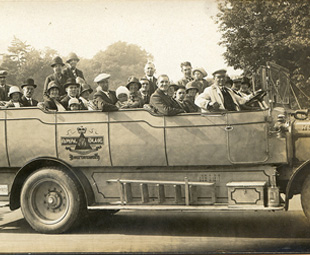Transport through the times …

In the first of a regular FOCUS series exploring the fascinating history of transport, we’re kicking off with the charabanc.
The charabanc comes from the French word, char a bancs – meaning “wagon with benches”. It originated in the early 19th century in France. The charabanc was a large bus, which was mainly used on sightseeing tours, with open sides and no centre aisle.
The long, four-wheeled carriage with several rows of forward-facing seats was mainly used by holidaymakers out on day trips, who were disparagingly referred to by social superiors as trippers. To such critics, the charabanc was a noisy, self-propelled pub.
It was pulled by up to six horses and was soon adopted in England, where only two horses were used. Later modified for public transport, it was entered from the rear and had five or more rows of seats.
Today, sightseeing motor coaches in Great Britain are sometimes called charabancs – although the word has actually been declared extinct by the Collins English Dictionary.
– Do any of our readers have fascinating historical snippets they would like to share? Email charleen@focusontransport.co.za
Published by
Focus on Transport
focusmagsa




